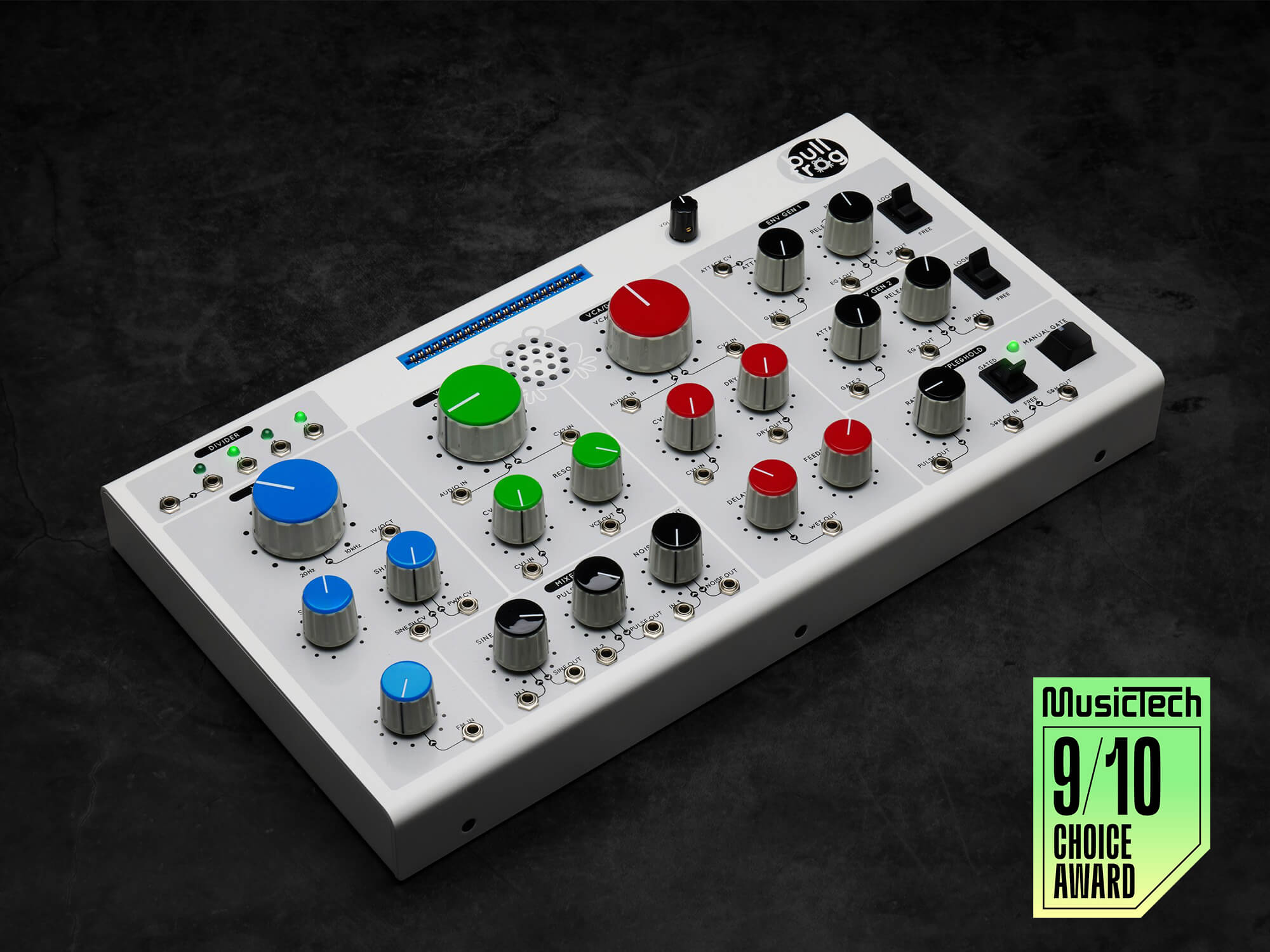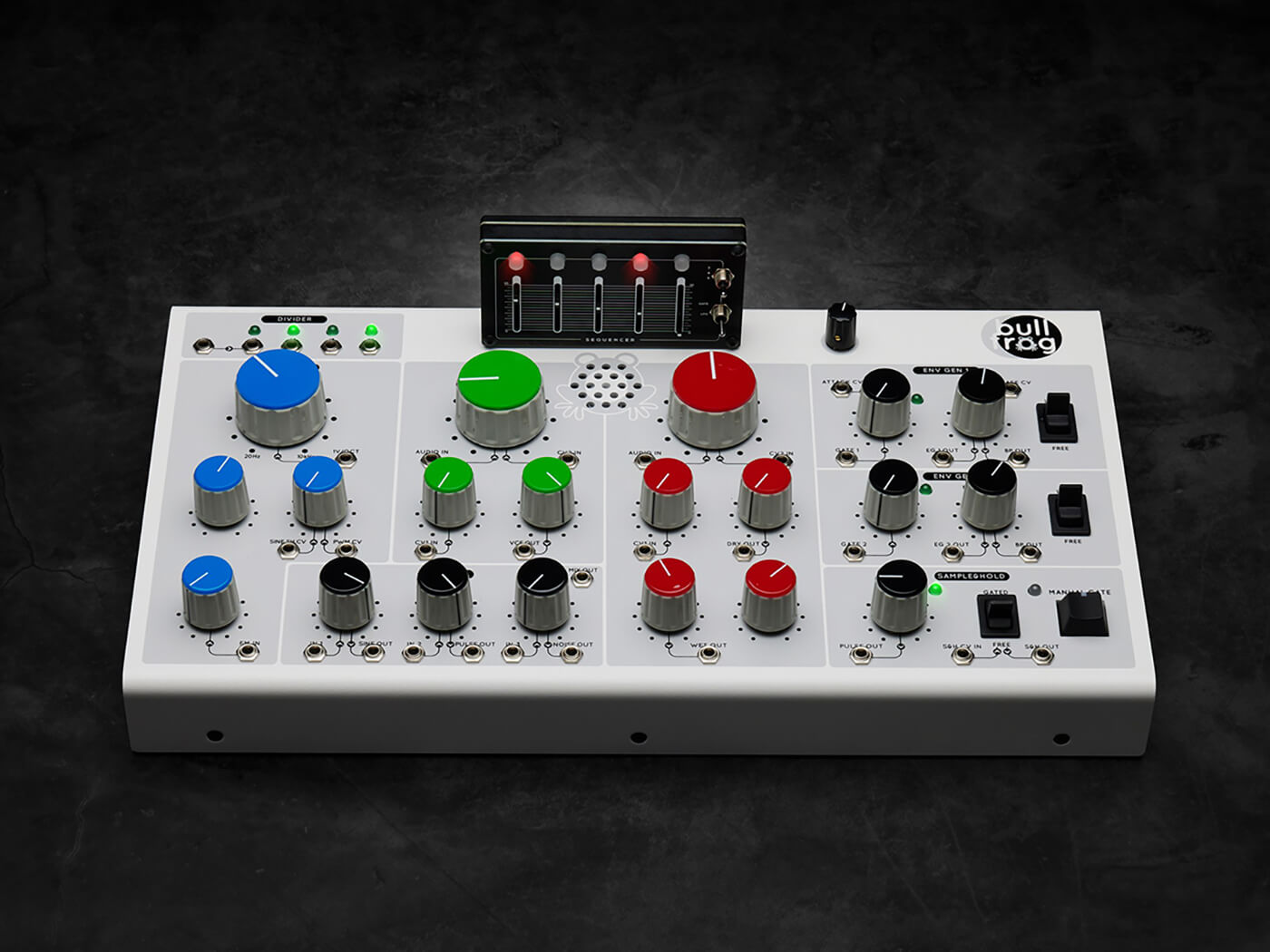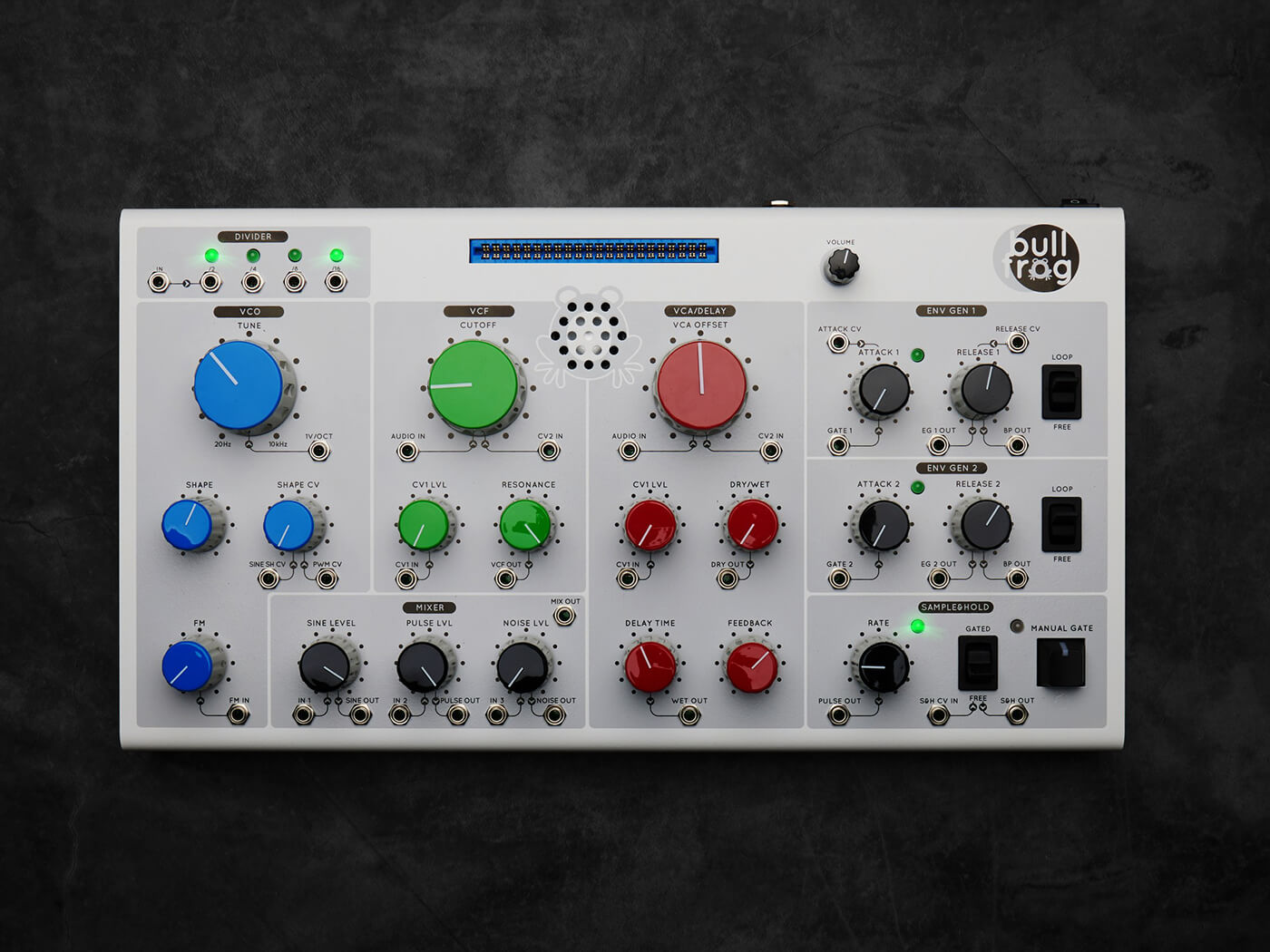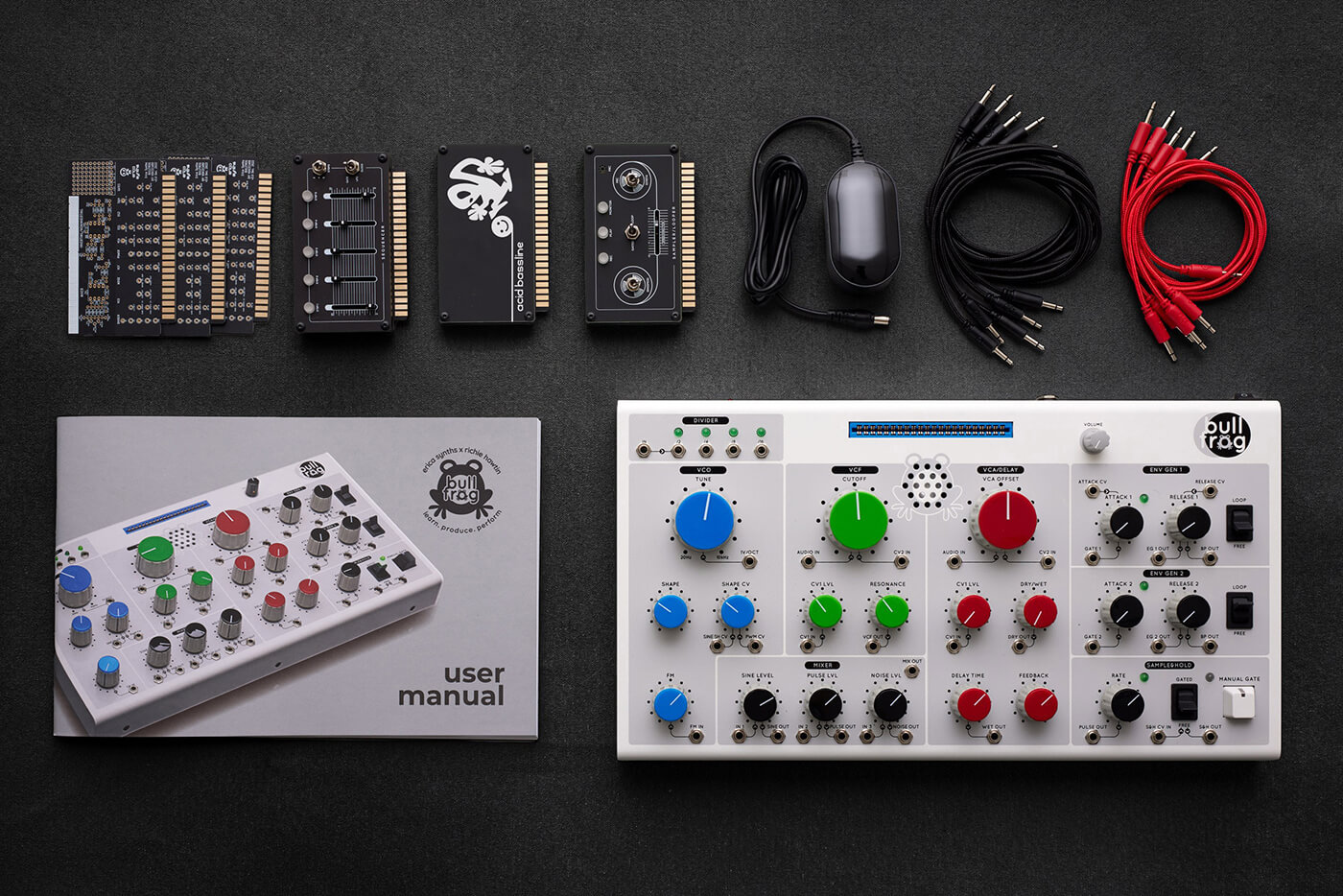Richie Hawtin and Erica Synths’ Bullfrog can easily help you teach and learn synthesis
Is the Erica Synths’ Bullfrog, a newbie-friendly synthesizer, coming to a school near you?

Erica Synths Bullfrog
Review Overview
Our rating
9
Our verdict
⊕ Solid build quality
⊕ A great-sounding synth by any standard
⊖ Price (though discounts are available for educational institutions)
€500, ericasynths.lv
Is Girts Ozolins preparing to retire? On more than one recent occasion, the Erica Synths founder has alluded to the question of his legacy. “When you are in your 50s, you start to think about what you will leave behind,” he was recorded saying at this year’s Machina Bristronica show. Similarly, in a demonstration video of the Bullfrog, he cites the desire to “have something lasting – something that will outlive us and pass our knowledge to the next generation” as a primary impetus behind its development.
- READ MORE: Native Instruments Kontrol S-Series MK3 controller lets you focus on your music, not your computer
The next generation is indeed the focus of the Bullfrog, so if you’re thinking it has less of the sleek, black finish of most Erica Synths instruments and more the look of a synth for children, that’s because, in many ways, that’s what it is.
The fruits of a collaboration with venerated British-Canadian synthesist and DJ Richie Hawtin, also known to many as Plastikman, the Bullfrog is more the locus of a wider vision to make education in synthesis more accessible than it’s ever been before.
In Hawtin’s words, the vision for the Bullfrog is “to inspire and welcome a younger audience into the world of electronic music.” The manual, for instance, is less a conventional instruction document and more a fully-fledged workbook, complete with an extensive (yet accessible) introduction to the behaviour of sound itself and the architecture of synthesizers, blank patch sheets and even a series of short tests at the end of each chapter. That’s right; if you’re a teacher or a parent looking for a way to educate younger players in electronic music, or if you’re an adult who is looking for a route into the craft of synthesis, this may well be the instrument for you. After all, be it for a child or adult, make no mistake, the Bullfrog is a fully-fledged, all-analogue synthesizer, and a powerful one at that.

It’s not the first foray into education for the Latvian synth powerhouse. Last year, the company ambitiously collaborated with German electronics whizz Moritz Klein to produce a line of DIY Eurorack modules: VCOs, VCAs, sequencers, filters and more shipped as kits, complete with extensive instructions not just covering how to build the things but detailing how and why their discrete components work together.
Now, though, Erica is going from the workbench to the classroom – literally and figuratively. The heart of the Bullfrog constitutes a single VCO, offering variable sine-shark fin or pulse wave over eight oscillators, a resonant low pass filter, a VCA section and a simple modulation matrix consisting of two cycling envelopes and a sample and hold. Atop these is an onboard delay, a noise generator and a clock divider.
Hawtin’s use of the word ‘welcome’ feels pertinent here; arguably one of the primary deterrents for newcomers and young people to the world of synthesis is how daunting and esoteric it can look. The 38-or-so centimetre-wide synth does everything it can to work against that. It’s big, spacious, colourful and, above all, it’s simple.
The Bullfrog also demonstratively chooses not to muddy the water with any normalised connections under the hood like a semi-modular, instead requiring patching to make even a basic sound. This is a wise move; after all, the goal isn’t to make sounds as quickly as possible here, it’s to enable the understanding of signal paths from the very first connection to the end result. The inclusion of delay then offsets this perfectly, adding just the right amount of drama to the Bullfrog’s output and, in many ways, demonstrating what it might end up sounding like as part of a wider arrangement.

Ostensibly, the Bullfrog uses colour-coding to differentiate between its different circuits – something we daresay many experienced synthesists would also appreciate on their instruments.
Blue is for anything related to the VCO (such as tuning and FM), green is for the filter and red is for the VCA, including the delay circuit. That last inclusion could be confusing, since additive effects aren’t part of a conventional VCA section, but makes sense insofar as the notion of a VCA more or less just pertains to the levels of things. The main knobs for each – VCO tuning, VCF frequency cutoff and VCA level – are huge; just right for hands large or small to joyously grab and turn.
A built-in speaker means the synth can output sound without needing to be plugged in, perfect for classroom use and surprisingly powerful, yet capped at a reasonable volume, you’ll be pleased to hear.
There’s also a slot for various Voice Cards, not dissimilar to the Program Cards used by the coveted Buchla Easel. These can create instant patches (including a Hawtin-designed acid bass voice), and endow the Bullfrog with a sequencer or even a sampler with an onboard microphone. It means that the learning experience can start from either end – work at performing with a fully-fledged voice, tweaking on the fly, or learn how to incorporate other elements into your own original patch.

The educational potential doesn’t stop here: there’s also a humongous ‘XL’ version, unreleased at the time of writing and at least double the size of the regular Bullfrog, for educators to demonstrate patches on. Most certainly visible from the very back of any classroom, this boasts two larger speakers, modestly extended functionality and a generously sized onboard oscilloscope for illustrative purposes.
These are surely the building blocks of a dream scenario for anyone hoping to bring synthesis into the educational realm, or for those of any age who want to learn about it but have never known where to start. Many will understandably raise the issue of cost, particularly in these dark days of under-funded schools. Fair to say that, at €500 a unit, it’s unlikely many schools will be ordering Bullfrogs in batches of 20 with an XL version on top. But even without the educational discount promised by Erica Synths, in a vacuum, it’s important to point out that for what it is this synth is phenomenally good value. It’s well built, it sounds brilliant and it’s almost completely future-proof in its usability, which will only increase with the knowledge of its user.
Who knows, maybe in a decade’s time, many will be touting the Bullfrog as their ride-or-die instrument – the synth that started it all for them and one that they still use. Say it ain’t so, but if the Bullfrog is Girts’ swan song then it’s a fine one to be sure. However, with this project, he may have inadvertently created more demand for his and Erica Synths’ services than ever.
Erica Synths Bullfrog key features
- A classic subtractive synth with built-in speaker
- Wave-variable VCO
- Resonant low pass filter
- Two cycling envelopes plus sample and hold
- Onboard delay
- Voice card slots for ready-made patches or extra features